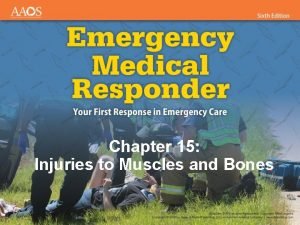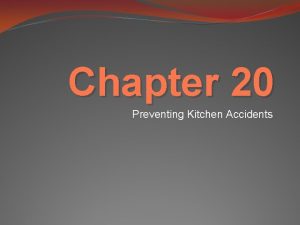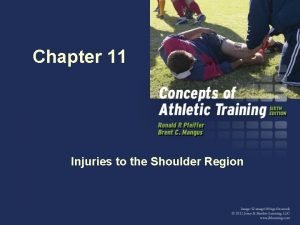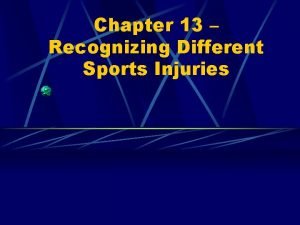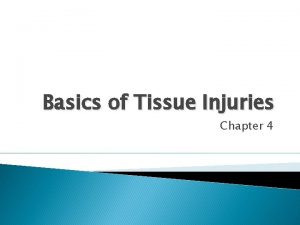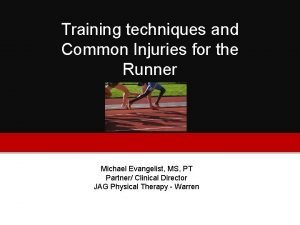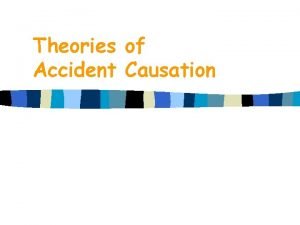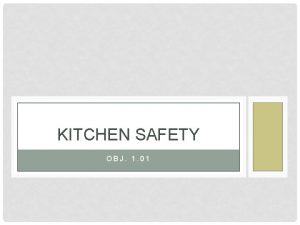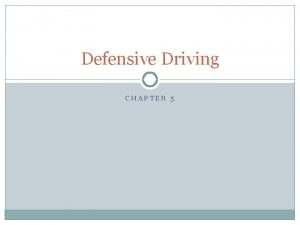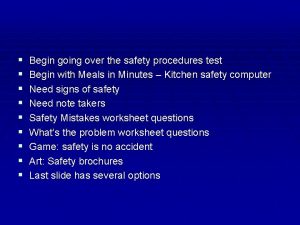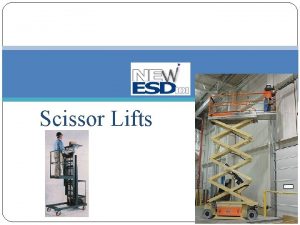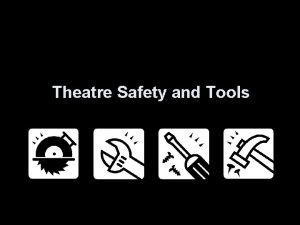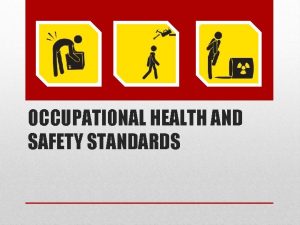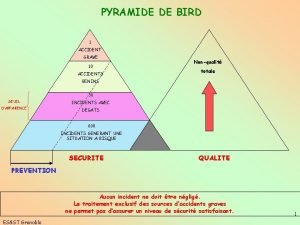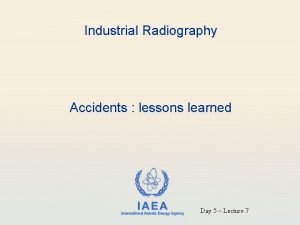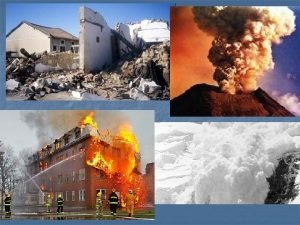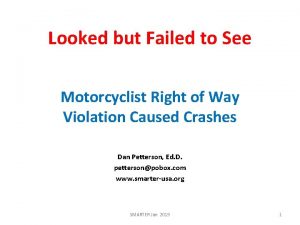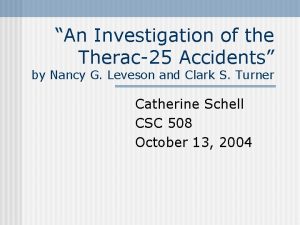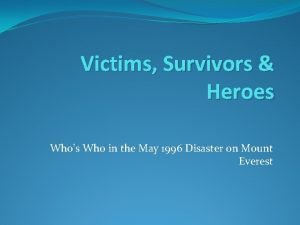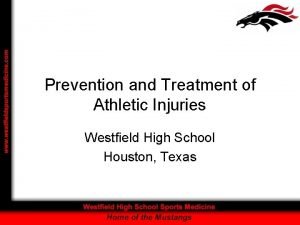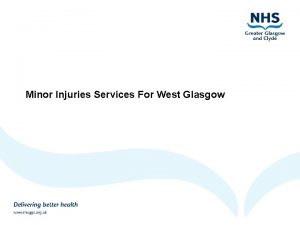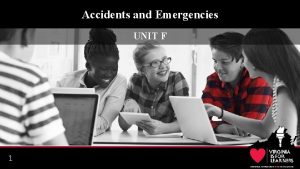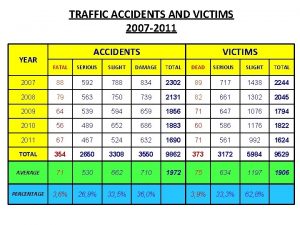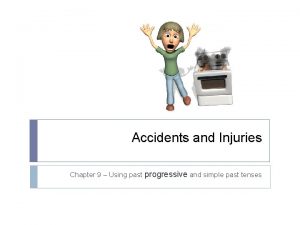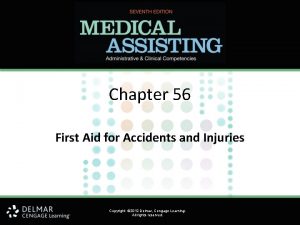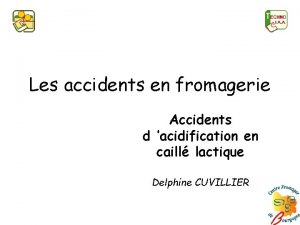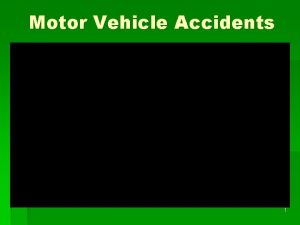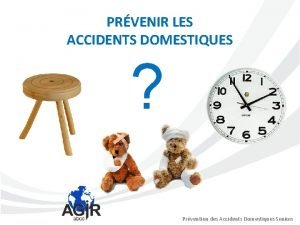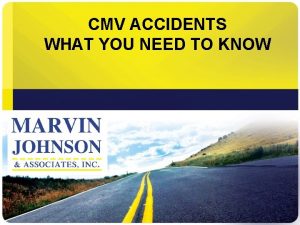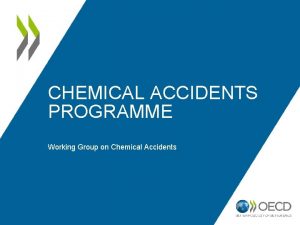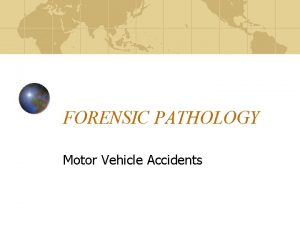Chapter 21 Accidents and Injuries Accidents and Injuries














































- Slides: 46

Chapter 21 Accidents and Injuries

Accidents and Injuries • Learning Objectives 1. Define safety, accidents, and unintentional injuries. 2. Describe various strategies to prevent unintentional injuries. 3. Use the epidemiological triad to identify unintentional injury risk factors. 4. Describe the Haddon matrix and explain why it was developed.

Accidents and Injuries • Learning Objectives (continued) 5. Discuss various ways to prevent motor vehicle crashes, motorcycle accidents, bicycle accidents, and pedestrian accidents. 6. Describe various strategies to improve home and work safety. 7. Describe ways to prevent firearm injuries. 8. List the major sports with the highest risk of injury for boys and girls. 9. Describe three grades of a concussion.

Accidents and Injuries • • • Unintentional Injuries and Accidents Motor Vehicle Safety Motorcycle Safety Pedestrian Safety Bicycle Safety Home and Community Safety Work Safety Sports and Recreational Injuries First Aid and Emergencies Taking Risks and Preventing Accidents

Accidents and Injuries

Accidents and Injuries • Among persons aged 1– 34, unintentional injury is the leading cause of death. • Fifth leading cause of death of people of all ages. • Accidents are preventable!

Unintentional Injuries and Accidents • Safety: ever-changing condition; maintaining the condition of minimal risk of injury, illness, or property damage from the hazards to which people are exposed. • Accident: a sequence of events that produces unintended injury, death, or property damage. – Accident refers to the event, not the result of the event.

Unintentional Injuries and Accidents • Accidents – Each year, one in four Americans will sustain an accidental injury that requires medical attention. – Injuries are the leading cause of disability in young people today. – Cause more deaths in children than all the infectious diseases combined.

Unintentional Injuries and Accidents • Unintentional Injury – The result of an accident. – The five leading causes of death from unintentional injury are: • • • Motor vehicle accidents Falls Poisoning by solids and liquids Fires and burns Drowning – The causes of death from unintentional injury change with age.

Unintentional Injuries and Accidents

Unintentional Injuries and Accidents

Unintentional Injuries and Accidents • Reducing Your Risk of Accidents – Safety professionals have focused on two areas: • Accident mitigation: methods to reduce damage caused by unplanned events. • Accident prevention: ways to eliminate the occurrence of unintentional injuries.

Unintentional Injuries and Accidents

Unintentional Injuries and Accidents • Reducing Your Risk of Accidents (continued) – Factors involved: • • Knowledge Attitudes, beliefs, and behaviors Economic and social conditions Ability level of the performer of tasks (competence) • Environmental conditions • Alcohol and other drugs • Stress and fatigue

Unintentional Injuries and Accidents • Analysis of Unintentional Injury – Injury Epidemiology • Agent of source of energy exchange • Vehicle for transmission of mechanical energy • Host or object—person, school building, house

Unintentional Injuries and Accidents

Unintentional Injuries and Accidents • Analysis of Unintentional Injury (continued) – The Haddon matrix is used to analyze unintentional injuries. • Phase 1: pre-event phase – Includes factors that may determine whether an accident will happen. • Phase 2: event phase – Occurs when the host comes into contact with forces of energy. • Phase 3: post-event phase – Emergency procedures provided after the injury has occurred.

Unintentional Injuries and Accidents • Analysis of Unintentional Injury (continued) – Approaches to unintentional injury reduction: • Educational and prevention strategies • Stricter laws and regulations • Better product design and automatic protection devices

Motor Vehicle Safety • Motor vehicle travel is the primary means of transportation in the United States. • The NHTSA estimates alcohol was involved in 41% of fatal crashes and 7% of all traffic accidents.

Motor Vehicle Safety • Teenagers between the ages of 16 and 17 have more car accidents than any other group whether based on age or miles driven. • Do you think this would be different if the legal driving age was raised? • Does a graduated license program work?

Motor Vehicle Safety • Other factors besides alcohol that are involved in motor vehicle fatalities: – Condition of vehicle – Speed of vehicle – Rural versus urban area – Use of seat belts

Motor Vehicle Safety • Seat Belts – Seat belts are estimated to have reduced the risk of fatal injury to front seat occupants by almost 50% since 1980. – National average usage is 88%. – More than two-thirds of teenagers who died in crashes that occurred at night were not wearing seat belts. – Air bags are helpful, but the seat belt is needed as well.

Motor Vehicle Safety • Distracted driving is also a major contributor to automobile accidents. – 28% of all car crashes are directly attributable to talking or texting on cell phones.

Motorcycle Safety • An operator can ensure a safer ride by receiving proper training and wearing a helmet and protective clothing. • Less than 10% of all motorcycle operators have received any formal training. • In 1966, Congress passed a law that all motorcycle riders and passengers had to wear a helmet.

Motorcycle Safety • All-Terrain Vehicles – Can be driven by anyone off road and almost anywhere they can be made to go. – In 2011, there were 107, 500 accidents reported. – Hard to police because they are driven on public lands and side roads.

Motorcycle Safety • Powered Two-Wheelers – Manufactured not to exceed 30 mph, but they can be modified to go up to 50 mph. – Carry a high injury risk. • Collisions with motor vehicles. • Faulty vehicles. – Many cities have few laws regarding PTWs.

Pedestrian Safety • Each year, traffic accidents injure 70, 000 pedestrians and kill 4, 500 pedestrians. • The majority of pedestrian deaths involve children ages 5– 9 years. • Young children are unable to judge the speed and distance of approaching motor vehicles. • The elderly are also at risk because of failing eyesight, hearing, and mobility.

Bicycle Safety • Single most important factor in reducing bicycle deaths is well-designed and effective helmets. • In 2012, more than half a million bicyclists were injured seriously enough to require treatment; about 800 bicyclists died from accident injuries. • A common cause of accident is the cyclist’s “failure to yield right-of-way” to an automobile. • Bicycle riders are required to follow the same rules of the road as automobile operators. • Wear bright, reflective clothing and equip your bike with reflectors and lights.

Bicycle Safety

Home and Community Safety • Main categories of home accidents are: – Falls – Poisonings – Fires – Drowning – Suffocation • Disabling injuries are more numerous in the home than they are in the workplace and in motor vehicle accidents combined.

Home and Community Safety

Home and Community Safety • Falls – Each year, one in three Americans over age 65 and one in two over age 75 fall and suffer an injury. – Certain areas of the home are most hazardous for falls: kitchen, bathroom, laundry room, and stairs.

Home and Community Safety • Poisonings – Poison: any chemical substance that causes illness, injury, or death. – Poison can enter the body by: • • Being ingested Being inhaled Being injected Coming in contact with skin – Many cultivated plants, trees, and bushes contain poisons. – Young children are particularly susceptible.

Home and Community Safety • Drowning – Drowning accounts for many unintentional injuries and fatalities in the home; young children are especially vulnerable. – Laryngospasm: a spasm of the larynx caused by the inhalation of water. – Only 10% of people survive after being under water longer than 6 minutes. – Alcohol and other drugs may be the biggest predisposing factors in drowning for individuals aged 15 and older.

Home and Community Safety • Choking and Suffocation – Choking to death is caused by an object lodged in the airway. – When the airway is completely blocked, a choking victim is unable to speak, breathe, or cough. – If the object is not removed quickly, the person may lose consciousness and die from lack of oxygen.

Home and Community Safety • Fires – Elderly, minority, and low-income populations are at greatest risk. – May be caused by: • • • Space heaters Faulty wiring Fireplaces Grease fires in the kitchen Improper storage of combustible materials Careless smokers

Home and Community Safety • Fires – Death rates caused by fires have decreased since the 1950 s because of modern technology, fire detection devices, and education. – Education and prevention are the best strategies to eliminate unintentional injuries from fires. – Have an escape plan. – Place smoke and fire detectors strategically in the house. – Post emergency phone numbers.

Home and Community Safety • Firearms – There are three categories of firearm injuries: • Unintentional • Intentional • Undetermined – All firearms should be locked away.

Work Safety • During the past century, unintentional injury deaths in the workplace were reduced by 90%. • The agriculture industry has the second highest rate of occupational illnesses and injuries; manufacturing has the highest rate. • Common occupational illnesses include skin disorders, respiratory conditions, poisonings, and dust-related illness.

Work Safety • Repetitive motion disorders: caused by repeated stress to a body part resulting from repetitive motion for long periods of time; carpal tunnel syndrome is one type of cumulative motion disorder. • Symptoms of carpal tunnel syndrome are burning, numbness, tingling, and stiffness of hand, fingers, or wrist.

Work Safety • Sick Building Syndrome – Characterized by a variety of symptoms reported by workers in modern office buildings. – Recent evidence has indicated a correlation among pollutants in or near the building, a poor ventilation system, and sick building syndrome. – Symptoms are asthma, lung infections, dizziness, nausea, throat and eye irritations, fatigue, cough, and shortness of breath.

Sports and Recreational Injuries • Very common among youth. • Most injuries occur in basketball, football, and cycling. • Coaches and parents have an obligation to protect youth from becoming injured in sports activities.

Sports and Recreational Injuries • Concussion – Comes from a head injury involving a temporary loss of conscious and a period of amnesia upon waking. • Grade 1: feeling dazed or confused for less than 15 minutes. • Grade 2: mental confusion persists for longer than 15 minutes. • Grade 3: involves any loss of consciousness.

First Aid and Emergencies • First aid and medical emergencies should be handled appropriately until a qualified professional arrives to take over. • First aid: the immediate care given to an injured or ill person (i. e. , temporary assistance). • Knowledge about first aid and medical emergencies can literally mean the difference between life and death.

Taking Risks and Preventing Accidents • Self-Evaluation – What risks are necessary and acceptable for you to live the way you want to?

Accidents and Injuries • What is your opinion on the legal driving age? Should it change to reduce risks? • Do you wear a bicycle helmet even when you don’t “have to”? Why or why not?
 Chapter 14 promotion of safety
Chapter 14 promotion of safety Chapter 13:2 preventing accidents and injuries
Chapter 13:2 preventing accidents and injuries A short backboard or vest-style immobilization
A short backboard or vest-style immobilization Chapter 21 caring for head and spine injuries
Chapter 21 caring for head and spine injuries Injuries to muscles and bones chapter 15
Injuries to muscles and bones chapter 15 Jones and bartlett learning
Jones and bartlett learning Chapter 11 assessment and evaluation of sports injuries
Chapter 11 assessment and evaluation of sports injuries Chapter 12 lesson 2 improving your fitness
Chapter 12 lesson 2 improving your fitness Chapter 20 preventing kitchen accidents
Chapter 20 preventing kitchen accidents Chapter 17 first aid
Chapter 17 first aid Chapter 11 injuries to the shoulder region
Chapter 11 injuries to the shoulder region Chapter 4 preventing injuries through fitness
Chapter 4 preventing injuries through fitness Chapter 13 worksheet recognizing different sports injuries
Chapter 13 worksheet recognizing different sports injuries Chapter 4 basics of tissue injuries
Chapter 4 basics of tissue injuries Unit 15:1 providing first aid
Unit 15:1 providing first aid Common track and field injuries
Common track and field injuries How are sports injuries classified and managed
How are sports injuries classified and managed Theories of accidents osha
Theories of accidents osha How momentum conservation is applied in vehicular accidents
How momentum conservation is applied in vehicular accidents Texte argumentatif sur les accidents de la route
Texte argumentatif sur les accidents de la route 7 types of kitchen accidents
7 types of kitchen accidents Most accidents are caused by _________ driving error
Most accidents are caused by _________ driving error Preventing kitchen accidents worksheet
Preventing kitchen accidents worksheet Accidents sportifs statistiques
Accidents sportifs statistiques Scissor aerial work platform
Scissor aerial work platform Accidents/illness of family members
Accidents/illness of family members Av accidents
Av accidents Industrial radiography accidents
Industrial radiography accidents What is theatre safety
What is theatre safety Use excessive force if things don't quite slip into place
Use excessive force if things don't quite slip into place Pyramide de bird
Pyramide de bird Statistiques accidents du travail d'origine électrique
Statistiques accidents du travail d'origine électrique Industrial radiography accidents
Industrial radiography accidents Accidents in construction industry
Accidents in construction industry Accidents gramaticals
Accidents gramaticals Accidents & disasters
Accidents & disasters Accidents & disasters
Accidents & disasters Phantoms hypothesis testing
Phantoms hypothesis testing Lbfts
Lbfts An investigation of the therac-25 accidents
An investigation of the therac-25 accidents Tim madsen everest
Tim madsen everest The hunger games chapter 24 questions and answers
The hunger games chapter 24 questions and answers What are sentinel injuries
What are sentinel injuries Westfield sports injuries
Westfield sports injuries Stobhill miu
Stobhill miu Aims and principles of first aid
Aims and principles of first aid Kristen wilson injuries
Kristen wilson injuries




